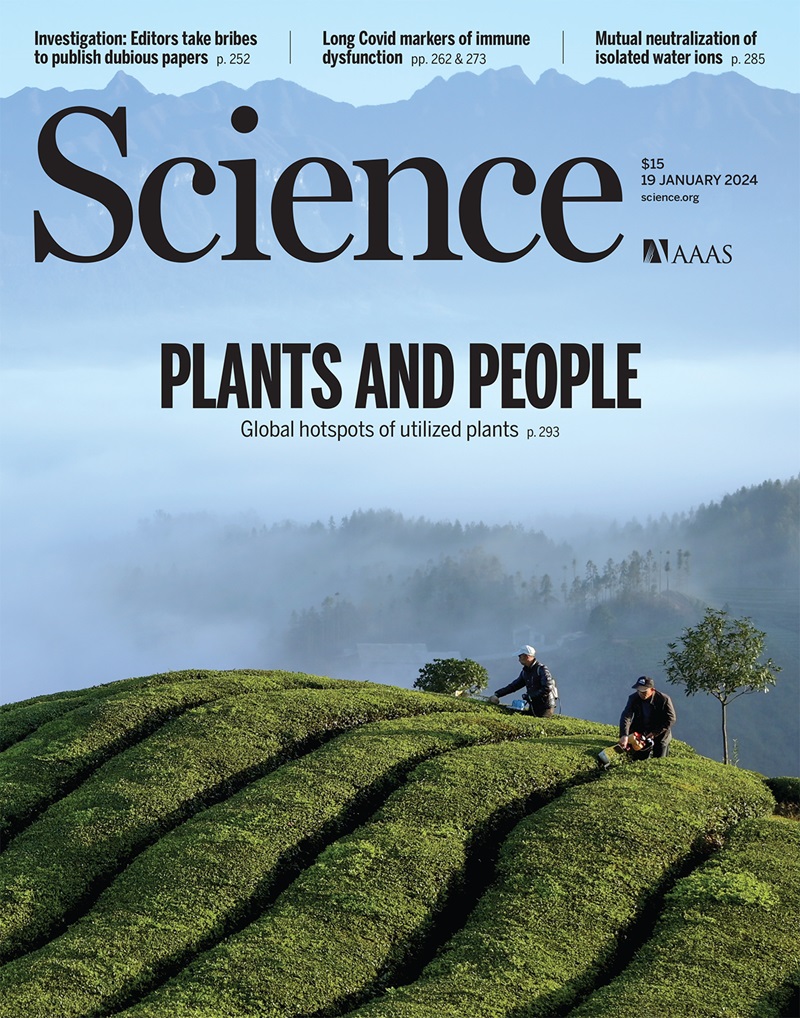高熵氧化物纳米带的弹性、形态和熵转化
IF 44.7
1区 综合性期刊
Q1 MULTIDISCIPLINARY SCIENCES
引用次数: 0
摘要
我们成功合成并表征了一种具有纳米带形态的一维高熵氧化物(1D-HEO)。这些1D-HEO纳米带在高温(至1000°C)、高压(至12千兆帕斯卡)和长期暴露于恶劣的酸或碱化学环境下均表现出高度的结构稳定性。此外,它们表现出显著的机械性能,具有优异的弹性模量,达到每立方米40兆焦耳。高压实验表明,在15千兆帕斯卡的条件下,d - heo纳米带从正交结构转变为立方结构,然后在30千兆帕斯卡以上形成完全无定形的heo,这是可恢复到环境条件下的。除了构型熵之外,这些变换还引入了额外的熵(结构无序)。这一发现提供了一种创造低维、弹性和高熵材料的方法。本文章由计算机程序翻译,如有差异,请以英文原文为准。
Resiliency, morphology, and entropic transformations in high-entropy oxide nanoribbons
We present the successful synthesis and characterization of a one-dimensional high-entropy oxide (1D-HEO) exhibiting nanoribbon morphology. These 1D-HEO nanoribbons exhibit high structural stability at elevated temperatures (to 1000°C), elevated pressures (to 12 gigapascals), and long exposure to harsh acid or base chemical environments. Moreover, they exhibit notable mechanical properties, with an excellent modulus of resilience reaching 40 megajoules per cubic meter. High-pressure experiments reveal an intriguing transformation of the 1D-HEO nanoribbons from orthorhombic to cubic structures at 15 gigapascals followed by the formation of fully amorphous HEOs above 30 gigapascals, which are recoverable to ambient conditions. These transformations introduce additional entropy (structural disorder) besides configurational entropy. This finding offers a way to create low-dimensional, resilient, and high-entropy materials.
求助全文
通过发布文献求助,成功后即可免费获取论文全文。
去求助
来源期刊

Science
综合性期刊-综合性期刊
CiteScore
61.10
自引率
0.90%
发文量
0
审稿时长
2.1 months
期刊介绍:
Science is a leading outlet for scientific news, commentary, and cutting-edge research. Through its print and online incarnations, Science reaches an estimated worldwide readership of more than one million. Science’s authorship is global too, and its articles consistently rank among the world's most cited research.
Science serves as a forum for discussion of important issues related to the advancement of science by publishing material on which a consensus has been reached as well as including the presentation of minority or conflicting points of view. Accordingly, all articles published in Science—including editorials, news and comment, and book reviews—are signed and reflect the individual views of the authors and not official points of view adopted by AAAS or the institutions with which the authors are affiliated.
Science seeks to publish those papers that are most influential in their fields or across fields and that will significantly advance scientific understanding. Selected papers should present novel and broadly important data, syntheses, or concepts. They should merit recognition by the wider scientific community and general public provided by publication in Science, beyond that provided by specialty journals. Science welcomes submissions from all fields of science and from any source. The editors are committed to the prompt evaluation and publication of submitted papers while upholding high standards that support reproducibility of published research. Science is published weekly; selected papers are published online ahead of print.
 求助内容:
求助内容: 应助结果提醒方式:
应助结果提醒方式:


